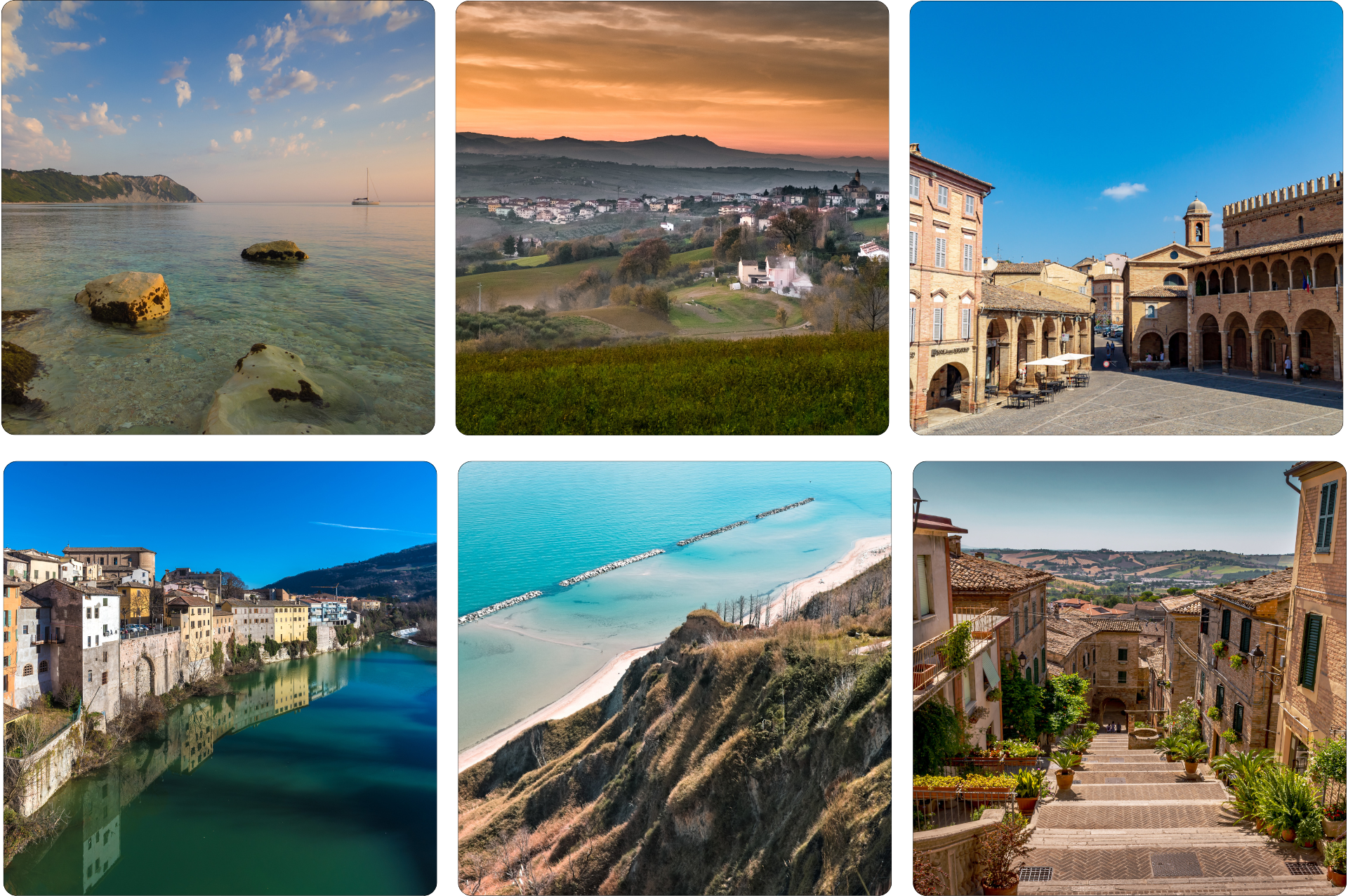Marche

History of the Marche
The Marche region boasts a rich history that dates back to prehistory, with primitive tribes leaving stone, bone and metal tools. The region saw the rise of the Piceni, an advanced civilization dedicated to hunting and warfare, followed by inclusion in Roman territory in 207 BC as a province of the Empire under the name Picenum. The Roman era is marked by significant constructions such as the port of Ancona and the Via Salaria. After the fall of the Roman Empire, the Marche was invaded by Goths, Lombards and Byzantines. The Middle Ages saw the arrival of the Franks and the division of the territory into fiefdoms. Many cities became free municipalities and Ancona emerged as a Maritime Republic. In the 17th century, the Papal State reaffirmed its sovereignty, but the region was the scene of struggle during the Risorgimento, culminating in its annexation to the Kingdom of Italy in 1860.


Food and wine history
The cuisine of the Marche reflects the diversity of its territory, with a clear distinction between the hinterland, rich in mushrooms, olives and truffles, and the coast, famous for its fish dishes. The fish broth varies from port to port, while the hinterland boasts pork-based dishes and the famous Ascolana olives. The region is also renowned for its quality wines such as Verdicchio and Rosso Conero.
Typical and artisanal products
The region boasts a wide range of typical and artisanal products, including the Acqualagna truffle, Casciotta d'Urbino PDO and Ciauscolo PGI. The craftsmanship of the Marche includes the processing of ceramics, wrought iron and accordions, testifying to local excellence and tradition.

Festivals
The Marche is known for its festivals which celebrate local products and traditional dishes, from those based on fish along the coast to those in the hinterland which highlight meats, legumes and truffles.
Folklore Events and Popular Festivals
The region is animated by events and festivals ranging from the historic Carnival of Piceno to the Quintana of Ascoli Piceno, from the Medieval Festivals in Offagna to the Festival of the Duke of Urbino, demonstrating a deep connection with local traditions and history.

Demographic and geographic data
The Marche has approximately 1.5 million inhabitants distributed across five provinces. The region is characterized by a mountain range, the Apennines, and a 173 kilometer long coast on the Adriatic. Monte Vettore is the highest peak. Despite the limited presence of lakes, the main rivers include the Metauro, the Potenza, the Tronto and the Esino.

